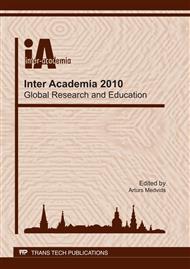p.66
p.70
p.74
p.78
p.82
p.86
p.90
p.94
p.98
Magnetization Peculiarities of Defects in Silicon Produced by Ni+, Co+, Fe+ Ion Implantation
Abstract:
Silicon p-type (100) wafers implanted with Ni, Co, Fe ions to a dose range of 3∙1013–3∙1016 cm-2 have been investigated by means of EPR. The g-factor from dangling bonds of silicon modified by Ni, Co, Fe ion implantation is found to be different from the g-factor of amorphous silicon explained by the change of the local magnetic permeability r. Extreme character of the spin concentration on dose dependence is found, being not typical for silicon.
Info:
Periodical:
Pages:
82-85
Citation:
Online since:
April 2011
Keywords:
Price:
Сopyright:
© 2011 Trans Tech Publications Ltd. All Rights Reserved
Share:
Citation:


